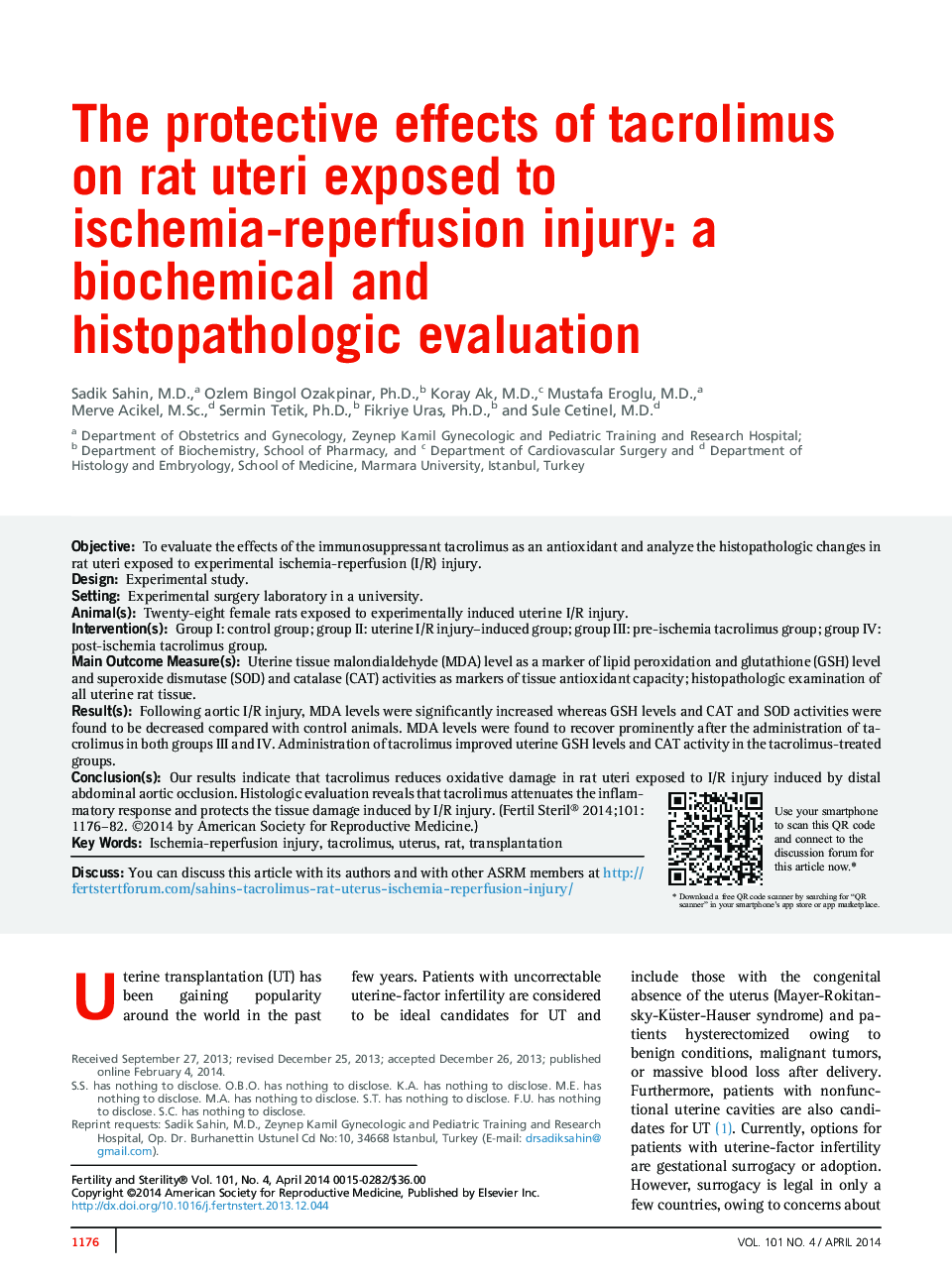| Article ID | Journal | Published Year | Pages | File Type |
|---|---|---|---|---|
| 3934536 | Fertility and Sterility | 2014 | 7 Pages |
ObjectiveTo evaluate the effects of the immunosuppressant tacrolimus as an antioxidant and analyze the histopathologic changes in rat uteri exposed to experimental ischemia-reperfusion (I/R) injury.DesignExperimental study.SettingExperimental surgery laboratory in a university.Animal(s)Twenty-eight female rats exposed to experimentally induced uterine I/R injury.Intervention(s)Group I: control group; group II: uterine I/R injury–induced group; group III: pre-ischemia tacrolimus group; group IV: post-ischemia tacrolimus group.Main Outcome Measure(s)Uterine tissue malondialdehyde (MDA) level as a marker of lipid peroxidation and glutathione (GSH) level and superoxide dismutase (SOD) and catalase (CAT) activities as markers of tissue antioxidant capacity; histopathologic examination of all uterine rat tissue.Result(s)Following aortic I/R injury, MDA levels were significantly increased whereas GSH levels and CAT and SOD activities were found to be decreased compared with control animals. MDA levels were found to recover prominently after the administration of tacrolimus in both groups III and IV. Administration of tacrolimus improved uterine GSH levels and CAT activity in the tacrolimus-treated groups.Conclusion(s)Our results indicate that tacrolimus reduces oxidative damage in rat uteri exposed to I/R injury induced by distal abdominal aortic occlusion. Histologic evaluation reveals that tacrolimus attenuates the inflammatory response and protects the tissue damage induced by I/R injury.
